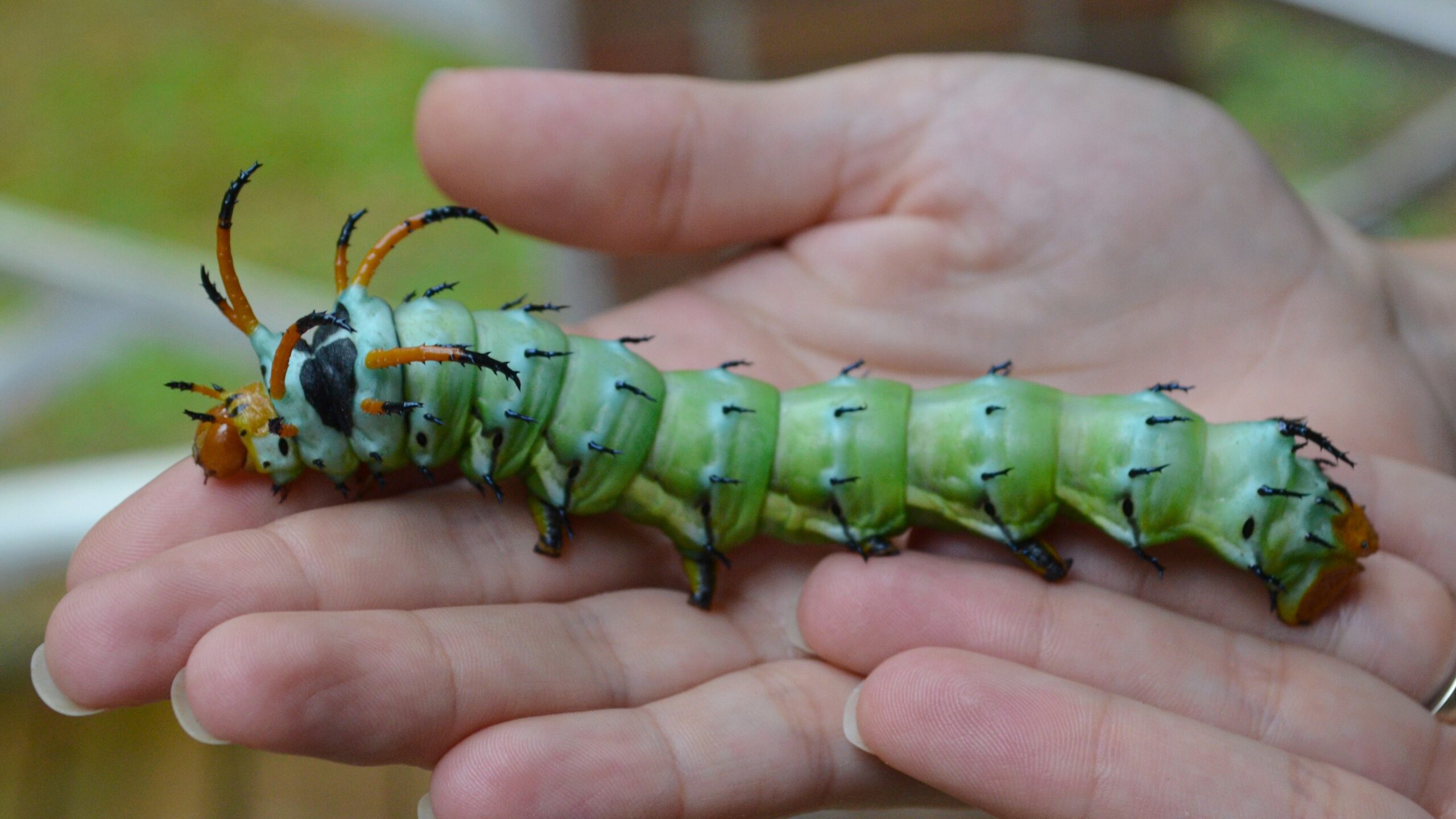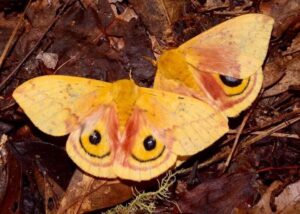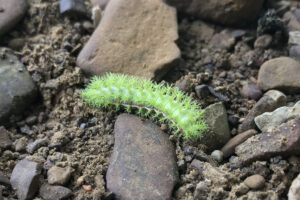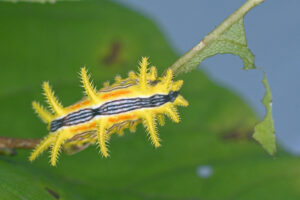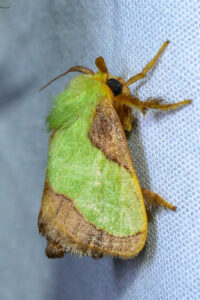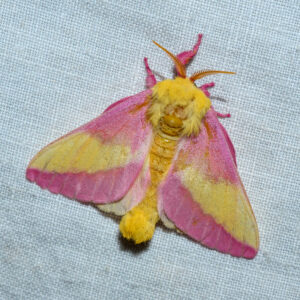by Dr. Jon Storm
We’re all familiar with the caterpillars of butterflies munching on the leaves of native plants, but many of these caterpillars actually turn into moths. Here are a few of the native caterpillars and moths you might find in South Carolina during the summertime. Each one is dependent on native plants for their survival.
Io Moths (Automeris io) are some of the most beautiful insects you’ll find in the Upstate. They have large eyespots on their hind wings that they reveal to startle potential predators such as birds. As caterpillars, they feed on a wide range of native plants, including Blackberries (Rubus spp.), Black Cherry (Prunus serotina), Eastern Cottonwood (Populus deltoides), Elms (Ulmus spp.), and Maples (Acer spp.).
There are 2-4 generations of this moth each year, with the last generation overwintering as pupae under the protective cover of leaf litter. Thus, Io Moths are a great example of how leaving leaf litter within planting beds benefits wildlife in your yard.
Despite their formidable appearance, Hickory Horned Devils (Citheronia regalifs) are neither venomous nor aggressive. They grow up to 5 inches long while feeding on a wide array of native trees like American Persimmon (Diospyros virginiana), American Sycamore (Platanus occidentalis), Black Walnut (Juglans nigra), Hickories (Carya spp.), and Sweet Gum (Liquidambar styraciflua). The caterpillars turn blueish green in their last instar before burrowing into the ground to spend the winter as pupae. The next summer, a large (6-inch wingspan) Regal Moth will emerge from the pupal chamber.
Stinging Rose Caterpillars (Parasa indetermina) have a way of catching your attention. I found this one feeding on a Common Silverbell (Halesia tetraptera var. tetraptera) but they’re adapted to feed on a host of other native trees such as American Beech (Fagus grandifolia), Dogwoods (Benthamidia spp.), and Oaks (Quercus spp.). As its bright colors, numerous spines, and name imply, this is one caterpillar you do not want to touch! The base of each hollow spine is connected to a gland that fills the spine with poison. If you accidentally touch a Stinging Rose Caterpillar, its spines will poke into your skin and the tips will snap off. This injects some of the poison into your hand, followed by an itching, burning sensation. Yikes! This is why wearing gloves and long sleeves is a good idea when pruning tree branches during the summer and early fall. Still, there’s no need to fear this uncommon caterpillar.
After overwintering as a pupa, a green and brown Stinging Rose Caterpillar Moth emerges the following summer.
Over 200 species of caterpillars feed on the leaves of Maple trees here in the Upstate. This includes the
Rosy Maple Moth (Dryocampa rubicunda). It’s bright pink and yellow colors make it a real showstopper! After mating, female moths lay eggs on the leaves of our native maple trees.
Add some of these native plants to your yard, leave some leaf litter, and see how many moths you can get to show up when the sun goes down.

